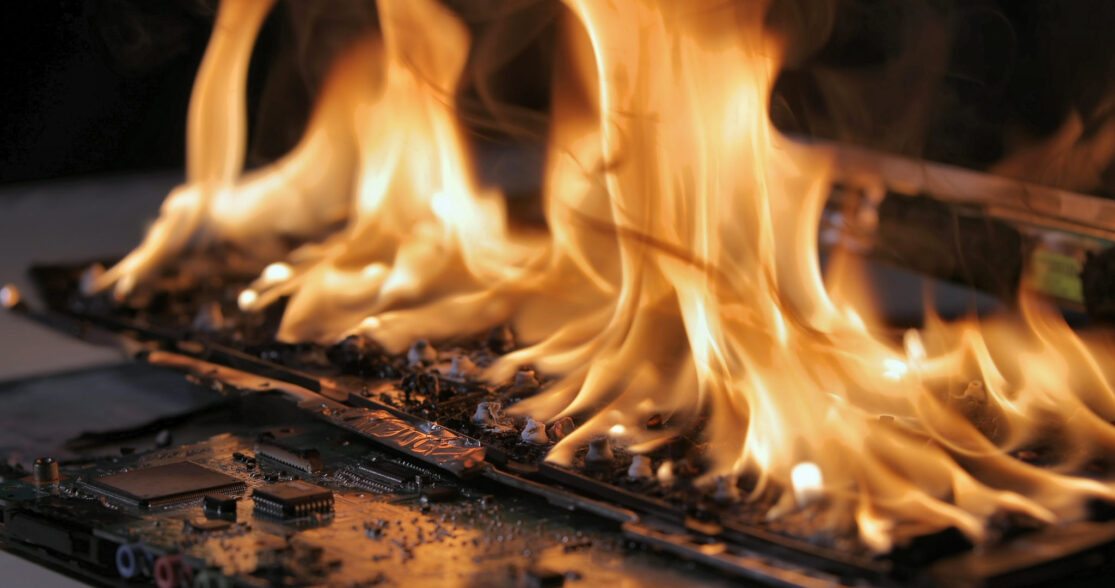Phones, laptops, other personal devices, electric cars, and even solar panel energy storage systems all employ rechargeable lithium-ion batteries. However, if the internal temperature of these batteries becomes too high, they stop functioning and can even catch fire. This is partly because the electrolyte, which moves lithium ions between the two electrodes when the battery is being charged or discharged, can catch fire.
Together with 19 other researchers, Rachel Z. Huang, a graduate student at Stanford University and the report’s lead author, created a non-flammable electrolyte for lithium-ion batteries at the SLAC National Accelerator Laboratory of the Department of Energy. Through their research, it was shown that batteries with this electrolyte can operate at high temperatures without catching fire. According to Huang, “one of the main issues in the battery industry is this safety issue, so there’s a lot of effort going into trying to produce a battery electrolyte that is safe.”
Use of Extra Salt
A lithium salt is dissolved in a liquid organic solvent, like ether or carbonate, to create the conventional lithium-ion battery electrolytes. This solvent makes it easier for lithium ions to move around, which makes batteries work better, but it can also start a fire. As they run, batteries produce heat. And a battery will heat up quickly if it has holes or other flaws. Small solvent molecules in the electrolyte begin to evaporate at temperatures exceeding 140 °F, turning the liquid into gas and expanding the battery like a balloon until the gas catches fire, igniting the entire battery structure.
Researchers have created non-flammable electrolytes over the past 30 years, such as polymer electrolytes, which move ions around using a polymer matrix as opposed to the conventional salt-solvent solution. Because they can’t move ions as well as liquid solvents, these less dangerous alternatives haven’t worked as well as traditional electrolytes.
The group sought to create a polymer-based electrolyte that could deliver on both performance and safety. Huang also had a thought.
Jian-Cheng Lai, a postdoctoral researcher at Stanford University and the co-first author of the paper, made a polymer-based electrolyte and added as much LiFSI, a lithium salt, as she could.
Huang explained, “I just wanted to test the limit and see how much I could put.” Salt typically makes up less than 50% of the weight of a polymer-based electrolyte. In order to produce one of the saltiest polymer-based electrolytes ever, Huang increased that percentage to 63%.This polymer-based electrolyte contains combustible solvent molecules in addition to other molecules. However, experiments in a lithium-ion battery showed that the overall electrolyte, known as Solvent-Anchored non-Flammable Electrolyte (SAFE), was non-flammable at high temperatures.
Because salt and solvents work well together, SAFE is effective. The solvent molecules aid in ion conductivity, providing performance on par with batteries made of traditional electrolytes. However, unlike the majority of lithium-ion batteries, SAFE-containing batteries continue to function at temperatures between 77 and 212 °F.
As a result of the plentiful salts that have been added, the solvent molecules are kept from evaporating and setting on fire. According to Zhenan Bao, a professor at Stanford University and researcher with the Stanford Institute for Materials and Energy Sciences (SIMES), who works with Huang, “this new finding brings forth a new way of thinking for polymer-based electrolyte design.” “This electrolyte is crucial for creating safe, high-energy-density batteries in the future.”
Electrolytes based on polymers can be either solids or liquids. Importantly, SAFE plastic’s polymer matrix is polymerized by the solvents and salt to create a goo-like liquid, just like traditional electrolytes. One advantage is that, unlike other non-flammable electrolytes that have appeared, a gooey electrolyte can fit into existing, commercially accessible lithium-ion battery components. For instance, solid-state ceramic electrolytes are expensive to make because they require electrodes that are specially made. According to Huang, no changes to the manufacturing setup are necessary with SAFE. “Of course, if it is ever used for production, there will be optimizations needed for the electrolyte to fit into the production line, but the work is much less than any of the other systems,” the researcher stated.
“This very exciting new battery electrolyte is compatible with the existing lithium ion-battery cell technology and would make big impacts on consumer electronics and electrical transportation,” said Yi Cui, a professor at SLAC and Stanford and a SIMES investigator who also serves as Huang’s advisor.
SAFE might find use in electric vehicles.
An electric vehicle’s many lithium-ion batteries could overheat and catch fire if they are placed too closely next to one another. However, an electric car’s batteries can be packed closely together without concern for overheating provided they are filled with an electrolyte like SAFE, which is stable at high temperatures.
This reduces the chance of a fire while also freeing up space for batteries and requiring less room for cooling systems. Since there are more batteries, the energy density is higher overall, extending the time between charges for the vehicle. Huang remarked, “So it’s not just a safety benefit. Additionally, using this electrolyte can enable you to fit many more batteries.
We’ll have to wait and see what other battery-operated devices might become a little SAFER.



Leave A Comment